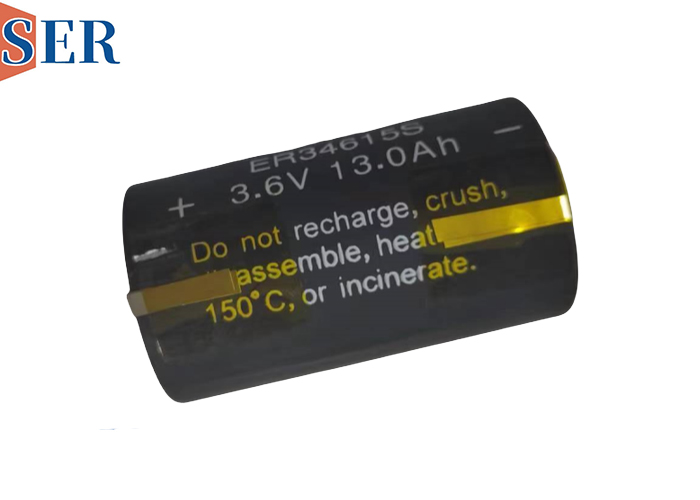High-Temperature Lithium Batteries: The Ultimate Power Source for Extreme Environments
High-Temperature Lithium Batteries: The Ultimate Power Source for Extreme Environments

In the rapidly evolving landscape of energy storage solutions, high-temperature lithium batteries have emerged as a reliable and efficient power source for applications requiring exceptional temperature tolerance and durability. Among these, the ER series of high-temperature lithium batteries, including the ER14250S, ER14335S, ER14505S, ER17335S, ER18505S, ER25500S, ER26500S, ER34615S, and ER341245S, stand out for their ability to operate in temperatures ranging from -20°C to +155°C, making them ideal for use in harsh environments.
The Fundamentals of High-Temperature Lithium Batteries
High-temperature lithium batteries are designed with special chemistries and materials to withstand extreme temperatures without compromising their performance. The ER series, for instance, utilizes lithium-thionyl chloride (Li-SOCl2 battery) as the electroactive material, which offers high energy density and excellent stability at elevated temperatures. The batteries are also equipped with robust packaging and seals to prevent leakage and ensure safe operation in demanding environments.
The key advantages of these batteries lie in their ability to maintain consistent performance over a wide temperature range. In comparison to traditional batteries, which often experience performance degradation at high temperatures, the ER series exhibits minimal loss in capacity or efficiency. This is critical for applications that require reliable power in extreme conditions, such as oil exploration, mining, and military operations.
Applications of High-Temperature Lithium Batteries
The versatility and durability of high-temperature lithium batteries have made them indispensable in various industries. In the oil and gas sector, for example, these batteries are used to power downhole tools and sensors that monitor well conditions and optimize production. The ability to operate reliably in high-temperature environments allows these batteries to provide critical data and insights, enabling operators to make informed decisions and maximize the efficiency of their operations.
Mining operations, too, rely heavily on high-temperature lithium batteries. Whether it's powering drills, pumps, or other equipment in underground mines or supporting remote monitoring systems on the surface, these batteries provide the necessary power to keep operations running smoothly. Their compact size and high energy density make them ideal for use in space-constrained environments, while their long lifespan ensures that replacements are infrequent, reducing downtime and maintenance costs.
In the military and aerospace industries, high-temperature lithium batteries are used in a wide range of applications, including missile systems, communication equipment, and sensors. Their ability to operate in extreme temperatures and harsh environments ensures that critical systems remain operational when called upon, making them an invaluable asset for national security.
Technical Specifications and Performance Characteristics
The ER series of high-temperature lithium batteries boasts a range of technical specifications that cater to different application requirements. The batteries vary in size, capacity, and discharge characteristics, allowing users to select the most suitable option for their specific needs. For instance, the ER14250S offers a compact design with a nominal voltage of 3.6V and a capacity of around 1200mAh, while the larger ER34615S provides a higher capacity of around 5000mAh.
In addition to their robust temperature tolerance, these batteries also exhibit excellent shelf life and low self-discharge rates. Many of the ER series batteries can maintain up to 80% of their original capacity after being stored for several years, ensuring that they are ready to use when needed. The low self-discharge rate further extends the useful life of the batteries, reducing the need for frequent replacements.
Environmental Considerations and Safety Measures
Despite their numerous advantages, high-temperature lithium batteries must be handled and disposed of properly to ensure safety and minimize environmental impact. Like all batteries, these devices contain potentially hazardous materials that can pose risks if not managed correctly. Therefore, it is crucial to follow manufacturer instructions and recommended practices for safe handling, storage, and disposal.
When selecting high-temperature lithium batteries for an application, it is important to consider the specific requirements and constraints of the environment. For example, batteries used in oil and gas exploration may require additional protection against the risk of explosion due to the presence of flammable gases. In such cases, explosion-proof enclosures or other safety measures may be necessary to ensure the safe operation of the batteries.
Future Developments and Trends
As the demand for reliable power sources in extreme environments continues to grow, high-temperature lithium batteries are likely to see further advancements in technology and performance. Manufacturers are constantly exploring new chemistries, materials, and designs to improve the batteries' energy density, durability, and safety.





